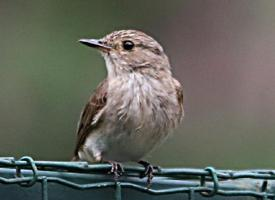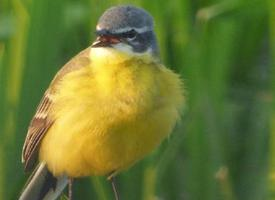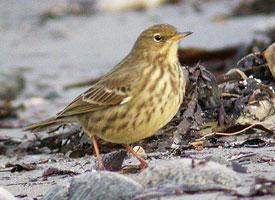
Poids et mesures
| Longueur | 16 cm |
|---|---|
| Poids | 24 g |
| Envergure des ailes | de 25 à 27 cm |
Description de l'animal
The Tree Pipit, Anthus trivialis, is a captivating small passerine bird that belongs to the pipit family, a group renowned for their slender builds and melodious songs. This species, which flourishes across the woodlands, forests, and open areas of Europe and the western parts of Asia, embarks on a remarkable migratory journey to sub-Saharan Africa to spend the winter months.Characterized by its subtle yet beautiful plumage, the Tree Pipit typically showcases a mottled brown back with darker streaks, providing an excellent camouflage against the forest floor and branches. Its underparts are a lighter, creamy-buff color, streaked with brown, which gradually becomes clearer and more pronounced towards its breast and flanks. The bird's face features a pale supercilium (eyebrow) which contrasts with its darker eye stripe, lending it a distinctive, alert appearance. Adult Tree Pipits possess a bill that is slender and perfect for their insectivorous diet, alongside legs that are a pale pinkish or flesh color, which can vary slightly between individuals.
One of the most enchanting aspects of the Tree Pipit is its song. During the breeding season, males perform a captivating aerial display, ascending high into the sky before parachuting down with outspread wings and tail, all the while singing a rich, melodious song. This display serves not only to attract a mate but also to establish and defend their territory against rivals. Their diet primarily consists of insects and other small invertebrates, although they may consume seeds and other plant matter outside of the breeding season.
Breeding typically takes place from late April through July. The Tree Pipit constructs a ground nest, artfully concealed among vegetation, where the female lays and incubates a clutch of about 4 to 6 eggs. These eggs, which are a whitish or pale blue adorned with fine brown spots, hatch after about two weeks. Both parents are involved in feeding the chicks, which fledge approximately 14 days after hatching.
The Tree Pipit's habitat preferences are quite specific; they favor open woodlands with scattered trees, forest edges, and clearings. These environments provide the necessary ground cover for nesting, as well as ample perching sites for males to sing and display. The species has shown some adaptability in occupying plantation areas and even large parks and gardens, provided there is sufficient tree cover and open ground.
Despite its widespread range, the Tree Pipit faces threats from habitat loss and degradation, particularly due to agricultural expansion and intensification, urbanization, and forest management practices that reduce suitable breeding areas. While currently not considered endangered, its population trends in some areas have sparked concern among conservationists, who advocate for habitat preservation and sustainable land-use practices to ensure the species' future.
In summary, the Tree Pipit is a small yet fascinating bird whose life cycle and behaviors, from its intricate mating displays to its long migratory journeys, capture the complexity and beauty of the natural world. Its presence enriches the ecosystems it inhabits, making it a cherished species among birdwatchers and nature enthusiasts alike.
Animaux similaires
Nouvelles photos d'animaux
Top 10 des animaux
- Dolphin gull (Leucophaeus scoresbii)
- Diana monkey (Cercopithecus diana)
- Moustached guenon (Cercopithecus cephus)
- Galápagos tortoise (Geochelone nigra complex)
- Japanese macaque (Macaca fuscata)
- Stone loach (Barbatula barbatula)
- Russian tortoise (Testudo horsfieldii)
- Common flying dragon (Draco volans)
- Greek tortoise (Testudo graeca)
- Vendace (Coregonus albula)


